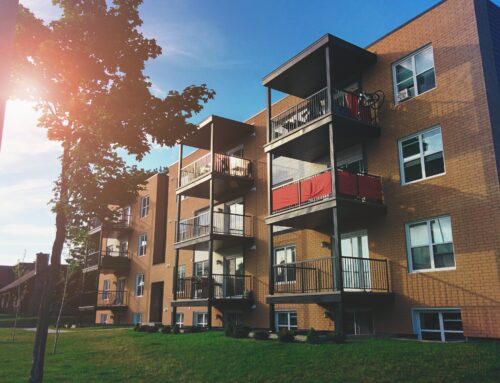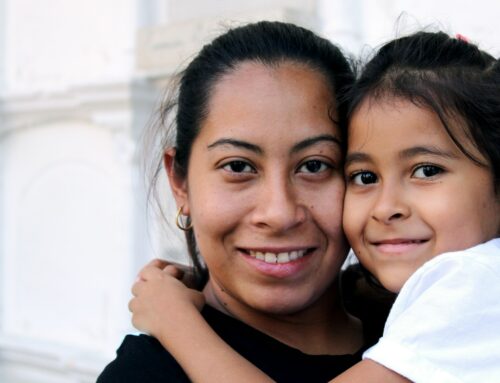One of the most confusing elements of Quebec’s education is the CEGEP system, which stands for “College of general and vocational education” in its English translation. In the original French it stands for “Collège d’enseignement général et professionnel”. The concept is unique to the province of Quebec and is not used anywhere else in Canada.
What is a CEGEP and how does it work?
CEGEP (usually pronounced “See-Jep”) is a public educational institution placed between high school and university in Quebec whose purpose is to assist in continuing education. As publicly subsidized institutions, they charge little or no tuition. These types of schools provide pre-university programs and vocational career programs to younger students as well as older professionals. Although all colleges in Quebec may be commonly referred to as a CEGEP, the distinction officially applies only to public colleges, even though the function of Quebec’s private colleges is almost identical.
Typically, the CEGEPs offer their students two different courses of study. A two-year pre-university program is very similar to what is offered by a junior college in the United States. By completing this program, the student receives a Diploma of College Studies (DCS), or DEC (Diplôme d’études collégiales). Without this diploma, Quebec students cannot enter university.
Additionally, the CEGEPs also have technical or vocational programs which usually last three years and prepare their graduates for a career in a very specific field. Many of these programs will also lead to a DEC, although certain continuing education programs that focus on very specific subject matter will only earn a college certificate, and not the diploma.
For more information on continuing education in Quebec, see our article on Continuing Education in Montreal.
Like the American junior college, the CEGEP system aims to make university education more accessible to more Canadians who may not be academically or financially prepared to go straight into university after high school. But unlike in the US system, students wishing to pursue a post-secondary education are actually required to attend a CEGEP or private college before enrolling in university. For this reason, undergraduate university programs in Quebec tend to last only three years, so that the number of years needed to earn a degree ends up being same in Quebec as in the rest of Canada and North America, because students in Quebec finish secondary school at grade 11. Furthermore, students who have completed a three-year vocational program from a CEGEP are also entitled to enter a university.
Today there are 48 CEGEPs in Quebec. Only 5 of them offer instruction primarily in English.
Who is eligible to enroll in a CEGEP or a Quebec university?
To be eligible for the CEGEP system you must have attended a total of 6 years of elementary, and 5 years of secondary school.
Here are some different scenarios in which attending a CEGEP may or may not be necessary:
- If you have attended high school abroad, and obtained a GED (General Education Diploma) – or your countries equivalent, and want to acquire a bachelors, master, or PhD degree at the university level, CEGEP is probably not for you. This is because after attending 6 years of secondary school (grades 7-12), you are eligible to enter straight university in Quebec and CEGEP would be an unnecessary step.
- If you are relocating to Quebec from another Canadian province or US state and have complete grade 12 and/or 13, then CEGEP is not necessary to attend and you can apply directly to a university.
- If you have completed only 5 years of high school (7-11) in your country, you are not able to go straight to university in Quebec. In this case the CEGEP system offers both vocational training degrees, and pre-university programs that will help you prepare to complete a degree at the university level – or decide what you would like to continue to study.
- If you are a relocating to Quebec and posses a French or International Baccalaureate, you are able to enter straight into a university in the province, and skip the CEGEP system all together.
What are the best CEGEPs in Montreal?
There are at least 15 CEGEPs in the Montreal area. The city also has four private colleges that serve the same purpose. Here’s a list of all the public CEGEPs and private colleges in the Montreal area.
Champlain Regional College: An English-language CEGEP with 2,500 students at St. Lambert Campus, in addition to two other campuses in Lennoxville and Quebec City. Offering pre-university education, technical diplomas and vocational training.
Dawson College: An English-language CEGEP located in the Westmount neighbourhood, with 11,000 students. Covering 12 acres, it’s the largest CEGEP in Montreal.
John Abbott College: An English-speaking public college at the western tip of the island of Montreal with about 7,000 students.
Vanier College: An English-language public college with 6,100 students located in the Saint-Laurent borough, just next door to CEGEP Saint-Laurent. Offering two-year pre-university programs and three-year vocational programs.
Collège Ahuntsic: A French-speaking public college situated in the Ahuntsic-Cartierville borough of Montreal with 10,100 students. Offering pre-university programs, technical-career programs, and a variety of work-study programs.
Cégep André-Laurendeau: A Francophone college in the LaSalle borough, with around 5,000 students. Offering two-year pre-university programs and three-year vocational programs.
Collège de Bois-de-Boulogne: A French-language CEGEP offering pre-university and professional-career programs for about 2,700 students.
Collège Édouard-Montpetit: A French-speaking public college in the suburb of Longueuil. Offering pre-university and technical programs for about 16,000 students.
Collège Gérald-Godin: A public CEGEP college located in the Sainte-Geneviève neighbourhood, on the west island of Montreal. The small school serves about 1,200 students.
Collège de Maisonneuve: A French-language public pre-university and technical college with about 6,700 students.
Collège Montmorency: A French-speaking public college in Chomedey, Laval, just north of Montreal. Offering pre-university and technical programs for about 7,000 students.
Cégep Marie-Victorin: A small public Francophone college in the borough of Montréal-Nord.
Collège de Rosemont: A small public Francophone college with about 2,800 students.
Cégep de Saint-Laurent: A public Francophone college with about 3,000 students located in the Saint-Laurent borough of the city, not far from the English-language public college of Vanier. Offering pre-university and technical programs.
Cégep du Vieux Montréal: A Francophone CEGEP in central Montreal with about 9,000 students.
Marianopolis College: A private Anglophone college in the Westmount neighbourhood with about 2,100 students. Offering two-year pre-university programs.
Collège André-Grasset: A private Francophone college offering technical and vocational training.
Collégial international Sainte-Anne: Part of a network of private primary, secondary and pre-university schools in Montreal, considered one of the best private schools in Quebec. The Francophone college offers a wide variety of academic and athletic programs.
Collège Jean-de-Brébeuf: A private, Francophone, formerly Jesuit college, offering pre-university curriculum. Recognized as one of the most prestigious private colleges in Quebec.
LaSalle College: Offering a variety of pre-university and professional training programs in both French and English.
Herzing College: A private, for-profit college with to small campuses in Montreal, offering a variety of professional and technical programs.
TAV College: A private college offering pre-university and vocational training in Montreal.
What is the R Score?
Universities in Quebec use this statistical formula to measure the academic performance of their applicants during their time in CEGEP. The convoluted and not entirely uncontroversial calculus looks like this:
- R score = ( (Zcol x IDGZ) + ISGZ + C ) x D , where C = D = 5
In this equation, Zcol refers to the number of standard deviations the student is above the class average. The ISGZ stands for the average high school z-score (Zsec) that the group’s students obtained on the MEES standardized exam. The IDGZ is the standard deviation of the students’ Zsec scores. The constant (C = 5) is used to reduce the possibility of a negative value in the score, and the multiplying the preceding sum by the constant (D = 5) ensures the largeness of the score. The R score is defined so that the average is 25, and most scores fall between 15 and 35.
While appearing at first glance to be something of a statistician’s wet dream, the R score has not exactly fulfilled the promise of delivering an impeccable student evaluation. On the contrary, it has proven unable to take certain considerations into account, at the same time lending too much weight to other factors.
If you’re just arriving in Quebec and need additional assistance to understand the unique laws, systems and customs of the province, you can always reach out to ARIANNE. We’ve been providing Relocations Services in Montreal since 1996, and we are always eager to help. (Unless you’re trying to calculate your R Score, in which case we might be just as clueless as you are!)
To learn more about education options in Quebec, see our articles on Private Schools in Westmount, English Language Education in Quebec, and 6 Reasons to Study in Canada.
Photo Credit: Wikipedia







Leave A Comment